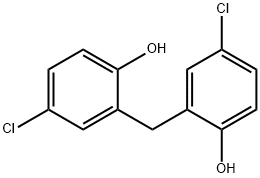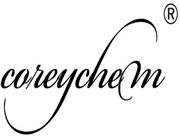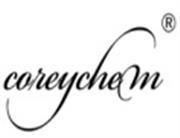| Description |
Dichlorophen is a nontoxic laxative vermicide of chlorinated phenol compound. It is an anticestodal agent, fungicide, germicide, anti-protozoan and antimicrobial agent. Its efficacy is restricted to Taenia spp, with poor to no activity against Echinococcus spp and Dipylidium caninum. Against these and other species, it may act against the strobilus, leaving the scolex to generate new proglottids. Its mechanism of action is thought to induce the uncoupling of oxidative phosphorylation. Therefore, it can be included as an ingredient in antimicrobial soaps and shampoos. It can be used in combination with toluene for the removal of parasites such as ascarids, hookworms, and tapeworms from dogs and cats. Dichlorophene can be used as a growth regulator in containerized seedlings of pine and spruce to regulate plant growth. |
| Sources |
https://www.sciencedirect.com/topics/agricultural-and-biological-sciences/dichlorophen
https://en.wikipedia.org/wiki/Dichlorophen
https://pubchem.ncbi.nlm.nih.gov/compound/Dichlorophen#section=Top
https://www.tabletwise.com/medicine/dichlorophene/uses-benefits-working
Andersson, B. "Analysis of plant growth regulating substances [incl. dichlorophene]." Annals of Applied Biology 43.2(1982):342-354. |
| Chemical Properties |
white or off-white powder |
| Uses |
anthelmintic |
| Uses |
Agricultural fungicide; antimicrobial; germicide in soaps, shampoos, etc. |
| General Description |
White slightly cream or light pink-colored powder. Melting point 177°C. Slight phenolic odor and a saline phenolic taste. Moderately toxic. Used as a fungicide and bactericide. |
| Air & Water Reactions |
Slowly oxidized in air. Insoluble in water. |
| Reactivity Profile |
Dichlorophen is incompatible with strong oxidizing agents and strong bases . Weakly acidic. |
| Fire Hazard |
Flash point data for Dichlorophen are not available; however, Dichlorophen is probably combustible. |
| Agricultural Uses |
Fungicide, Herbicide, Bactericide, Veterinary medicine: Not currently registered in the U.S. Dichlorophene is a wide-spectrum, non-oxidizing biocide used against all types of algae and bacteria. Widely used to treat fungi, fleas and worm conditions in pet animals and livestock. See U.S. Food and Drug Administration 20 CFR 520.580 and 20 CFR 520.581 |
| Trade name |
ANTHIPHEN®; DIPHENTANE 70®; DICHLOROPHEN®; DICHLOROPHEN B®; DICHLOROPHENE 10®; DICHLORPHEN®; DIDROXANE®; DIPHENTHANE 70®; FUNGICIDE F®; FUNGICIDE GM®; FUNGICIDE M®; G 4®; GEFIR®; HYOSAN; KORIUM®; PLATH-LYSE®; PREVENTAL®; PREVENTOL®; PREVENTOL GD®; PREVENTOL GDC®; SUPER MOSSTOX®; TAENIATOL®; TENIATOL®; TENIATHANE®; TRIVEX®; VERMITHANA®; WESPURIL® |
| Safety Profile |
Poison by intravenous route. Moderately toxic by ingestion. A skin and severe eye irritant. Mutation data reported. Can cause cramps and diarrhea. Possibly similar to DDT. An FDA over-the counter drug. An anthelmintic. When heated to decomposition it emits toxic fumes of Cl-. |
| Purification Methods |
Crystallise dichlorophen from toluene. [Beilstein 6 III 5406.] |

 China
China






